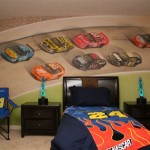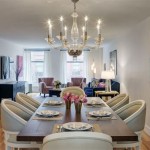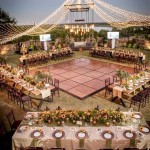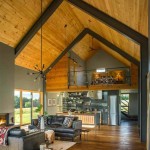Eclectic Living Room Decorating Ideas
The eclectic style, in interior design, represents an intentional blend of diverse elements, creating a cohesive and personalized space. It is characterized by a harmonious mix of patterns, textures, colors, and periods, reflecting individuality and a curated aesthetic. The goal is not merely to collect disparate items but to arrange them in a way that feels balanced and intentional. Achieving this requires careful consideration of scale, color harmony, and a unifying thread that ties the various elements together.
This approach contrasts with more rigid design styles that adhere to specific rules or time periods. Eclectic design embraces the freedom to experiment and express personal taste, allowing for the incorporation of vintage finds, modern pieces, and globally inspired accents. This adaptability makes it a dynamic and evolving style, perfect for those who appreciate variety and wish to create a living space that is both visually stimulating and deeply personal.
The perceived complexity of eclectic design often deters individuals from pursuing it. However, with a structured approach and an understanding of key principles, anyone can create an eclectic living room that is both stylish and inviting. The following sections will outline key considerations and strategies for successfully implementing an eclectic design in the living room.
Establishing a Core Color Palette
One of the most crucial aspects of creating a cohesive eclectic living room is establishing a core color palette. This palette serves as the foundation for the entire design and helps to unify the diverse elements. A well-defined color scheme prevents the space from feeling chaotic and provides a sense of visual harmony. Instead of strictly limiting the color choices, the focus should be on creating a balanced and complementary arrangement of hues.
The selection of a core color palette should consider the existing elements of the room, such as flooring, architectural details, and fixed furnishings. Neutral colors, such as gray, beige, white, or muted tones, often serve as a good base for an eclectic design. These neutrals provide a calming backdrop that allows bolder accent colors to shine without overwhelming the space. They also offer flexibility when incorporating different styles and patterns. For example, a living room with warm beige walls can accommodate both cool-toned blues and warm-toned reds, depending on the accessories and furniture chosen.
Accent colors can be introduced through furniture, textiles, artwork, and accessories. These colors should complement the neutral base and add visual interest. Consider using a color wheel to identify complementary colors or analogous colors. Complementary colors, such as blue and orange, create a dynamic contrast, while analogous colors, such as blue, blue-green, and green, offer a more subtle and harmonious effect. The key is to use these accent colors strategically and sparingly to avoid visual overload. A 60-30-10 rule is often helpful: 60% of the room should be the dominant color, 30% should be the secondary color, and 10% should be the accent color.
Consider the overall mood desired for the living room when selecting the color palette. Warm colors, such as reds, oranges, and yellows, create a cozy and inviting atmosphere, while cool colors, such as blues, greens, and purples, promote a sense of calm and relaxation. The intensity of the colors should also be taken into account. Bright, saturated colors create a bold and energetic look, while muted, desaturated colors provide a more subdued and sophisticated feel.
Furthermore, remember that the texture of the materials can also impact the perceived color. A textured fabric, such as velvet or linen, will appear richer and more complex than a smooth, flat surface. Therefore, consider the textures of the furniture and accessories when selecting colors, ensuring that they complement each other and contribute to the overall visual balance of the room. By carefully considering these factors, it is possible to create a core color palette that effectively unifies the diverse elements of an eclectic living room.
Mixing and Matching Patterns
Pattern mixing is a defining characteristic of eclectic design, but it requires careful consideration to avoid creating a visually jarring effect. The key is to create a harmonious balance between different patterns by focusing on scale, color, and motif. Successful pattern mixing can add depth, interest, and a sense of personality to the living room.
The first step in mixing patterns is to establish a common color thread that ties the different patterns together. This can be a color that appears in all of the patterns, or a range of colors that complement each other. For example, if one patterned pillow features blue, white, and yellow, consider incorporating other patterns that also contain these colors, even if the designs themselves are vastly different. This color connection helps to create a sense of visual cohesion.
Varying the scale of the patterns is also crucial. Combining patterns that are all the same size can feel overwhelming and monotonous. Instead, aim for a mix of large-scale, medium-scale, and small-scale patterns. A large-scale pattern, such as a bold floral print on a sofa, can be balanced with smaller-scale patterns, such as a geometric print on throw pillows or a subtle texture on a rug. This variation in scale creates visual interest and prevents the space from feeling too busy.
Consider the motifs of the patterns when mixing them. Combining patterns with similar motifs can create a sense of harmony, while mixing patterns with contrasting motifs can add visual excitement. For example, pairing a floral print with a geometric print can create a dynamic contrast, while combining different types of floral prints can create a more cohesive and romantic feel. The key is to experiment and find combinations that appeal to personal taste.
Textiles are a great way to introduce patterns into the living room. Pillows, throws, rugs, and curtains can all be used to add visual interest and texture. Consider using a variety of different fabrics, such as velvet, linen, cotton, and silk, to further enhance the eclectic feel. Wallpaper is another option for adding pattern to the walls, but it should be used judiciously to avoid overwhelming the space. A single accent wall with a bold wallpaper pattern can create a focal point without dominating the entire room.
When mixing patterns, it is important to consider the overall balance of the room. Avoid placing too many patterns in one area, as this can create a cluttered and chaotic look. Instead, distribute the patterns evenly throughout the space, allowing each pattern to stand out and complement the others. The use of solid colors can also help to break up the patterns and provide visual relief. By carefully considering these factors, it is possible to create a harmonious and visually stimulating living room that showcases the versatility of pattern mixing.
Incorporating Diverse Furniture Styles
An eclectic living room thrives on the juxtaposition of different furniture styles. Mixing vintage finds with modern pieces, incorporating globally inspired designs, and experimenting with unique shapes and materials are all key to creating a truly eclectic space. The goal is to curate a collection of furniture that reflects personal taste and creates a visually interesting and comfortable environment.
Start by identifying the key pieces of furniture that are essential to the living room, such as a sofa, armchairs, coffee table, and side tables. These items serve as the foundation for the design and should be chosen with care. Consider incorporating a variety of different styles and materials. For example, a modern sofa with clean lines can be paired with vintage armchairs upholstered in velvet or leather. A rustic coffee table made from reclaimed wood can be combined with sleek, minimalist side tables made from metal and glass.
Do not feel confined to purchasing entire furniture sets. The beauty of eclectic design lies in the ability to mix and match individual pieces. Instead of buying a matching sofa and loveseat, consider opting for two different armchairs or a sectional sofa paired with a unique accent chair. This approach allows for greater flexibility and personalization.
Incorporate furniture with different textures to add depth and dimension to the space. A velvet sofa, a leather armchair, a wooden coffee table, and a metal lamp can all contribute to creating a tactile and visually stimulating environment. Mixing smooth and rough textures, soft and hard surfaces, and matte and shiny finishes can enhance the overall eclectic feel.
Consider adding globally inspired furniture pieces to the living room. A Moroccan pouf, a Japanese screen, or an African drum table can add a touch of exoticism and cultural richness. These pieces can also serve as conversation starters and reflect personal interests and travels. Look for unique and unusual pieces that stand out and add personality to the space. Handcrafted furniture, such as items made by local artisans, can also add a sense of authenticity and character.
Vintage and antique furniture can also play a significant role in an eclectic living room. These pieces add character, history, and a sense of timelessness. Look for vintage items that are in good condition or can be easily restored. Consider reupholstering vintage chairs or refinishing antique tables to give them a new lease on life. Be sure to consider the scale of these items relative to the rest of the furniture.
When incorporating diverse furniture styles, it is important to maintain a sense of balance and harmony. Avoid overcrowding the space with too many pieces of furniture, as this can create a cluttered and overwhelming look. Instead, focus on selecting a few key pieces that complement each other and create a cohesive and inviting environment. Consider arranging the furniture in a way that encourages conversation and interaction. By carefully combining different furniture styles, it is possible to create a living room that is both visually stunning and comfortably functional.
Ultimately, the success of an eclectic living room depends on thoughtful curation and a willingness to experiment. It is a style that celebrates individuality and allows for the expression of personal taste. By focusing on color harmony, pattern mixing, and the incorporation of diverse furniture styles, anyone can create an eclectic living room that is both stylish and inviting.

Eclectic Living Room Decorating Ideas To

Eclectic Living Room Decorating Ideas To

How To Decorate An Eclectic Living Room Stowers Furniture

50 Eclectic Living Rooms For A Delightfully Creative Home Decoist

81 Eclectic Living Rooms Done Right Digsdigs

21 Eclectic Living Rooms With Tips And Ideas To Help You Decorate Your

81 Eclectic Living Rooms Done Right Digsdigs

Before After Vintage Eclectic Living Room Decorilla Interior Design

Tips For Eclectic Decorating Home Decor

50 Eclectic Living Rooms For A Delightfully Creative Home Decoist







